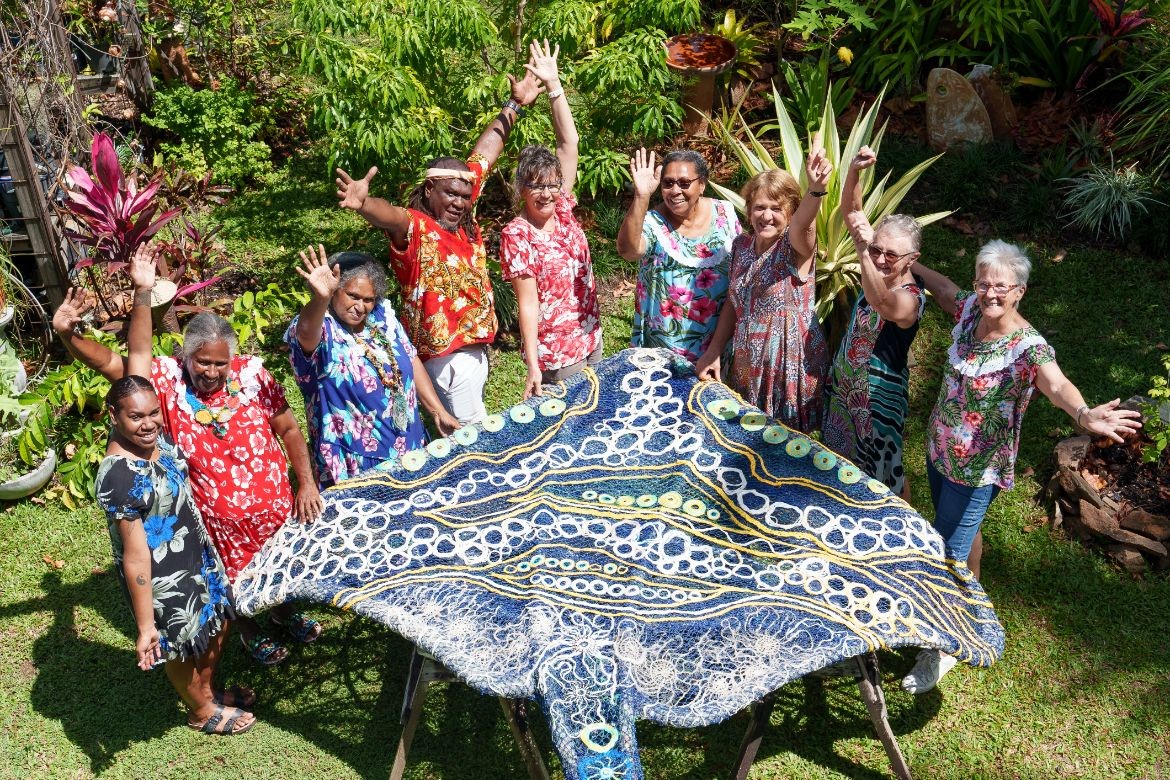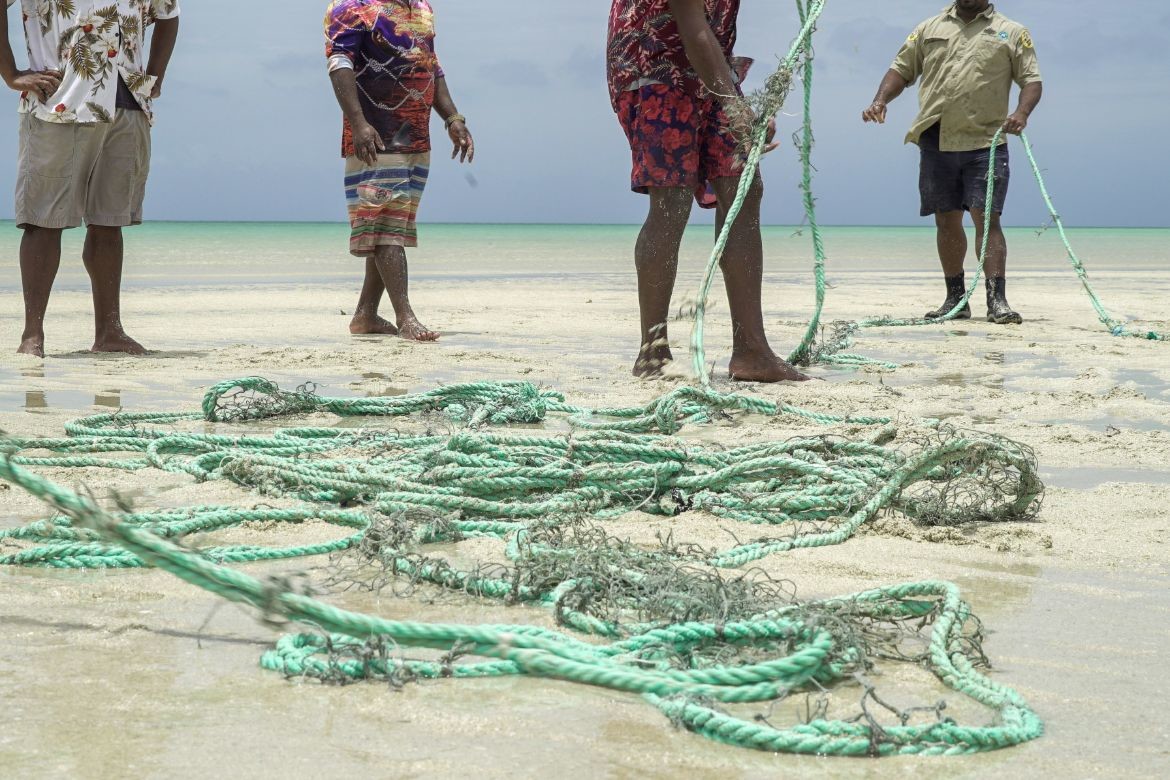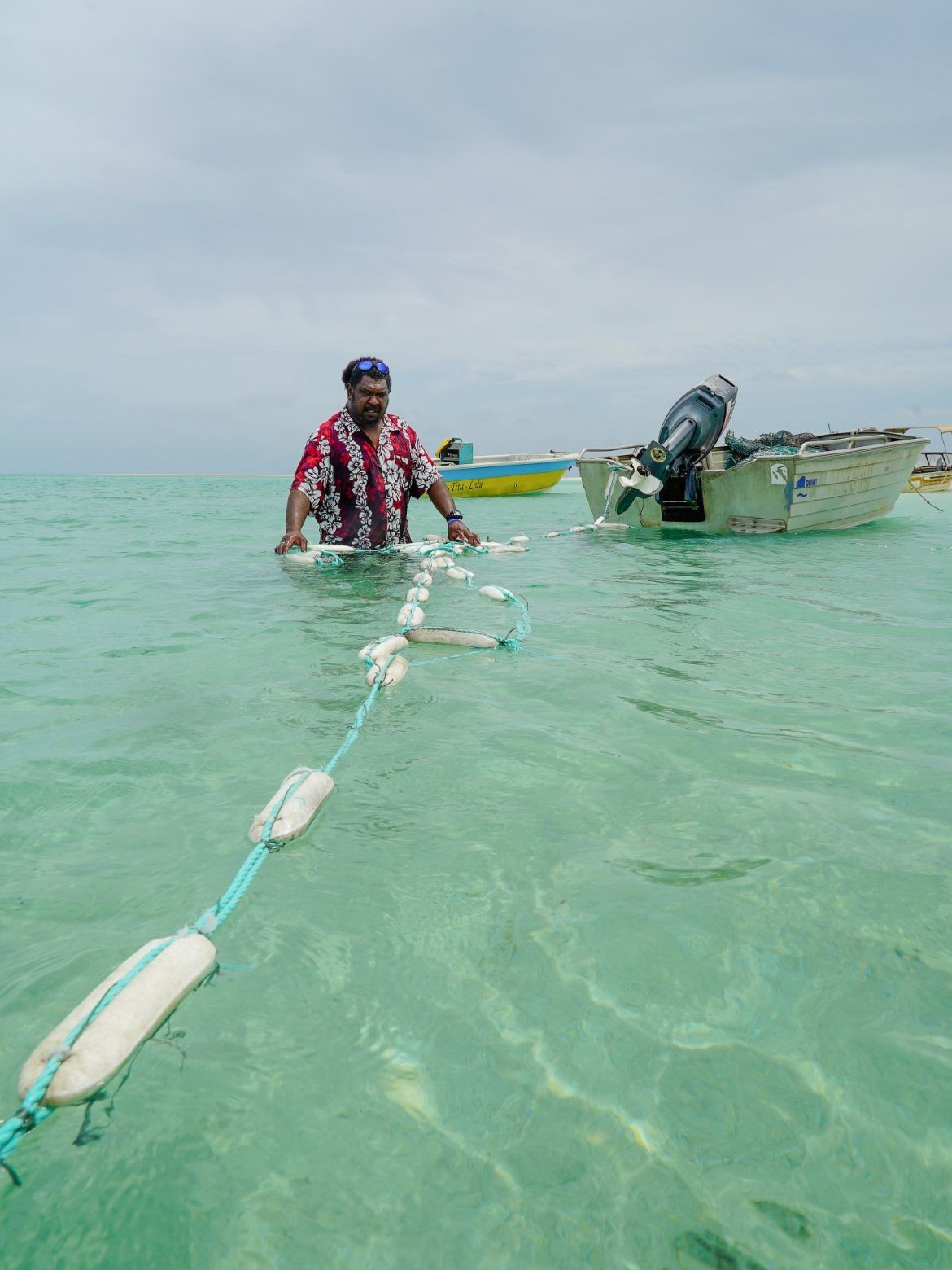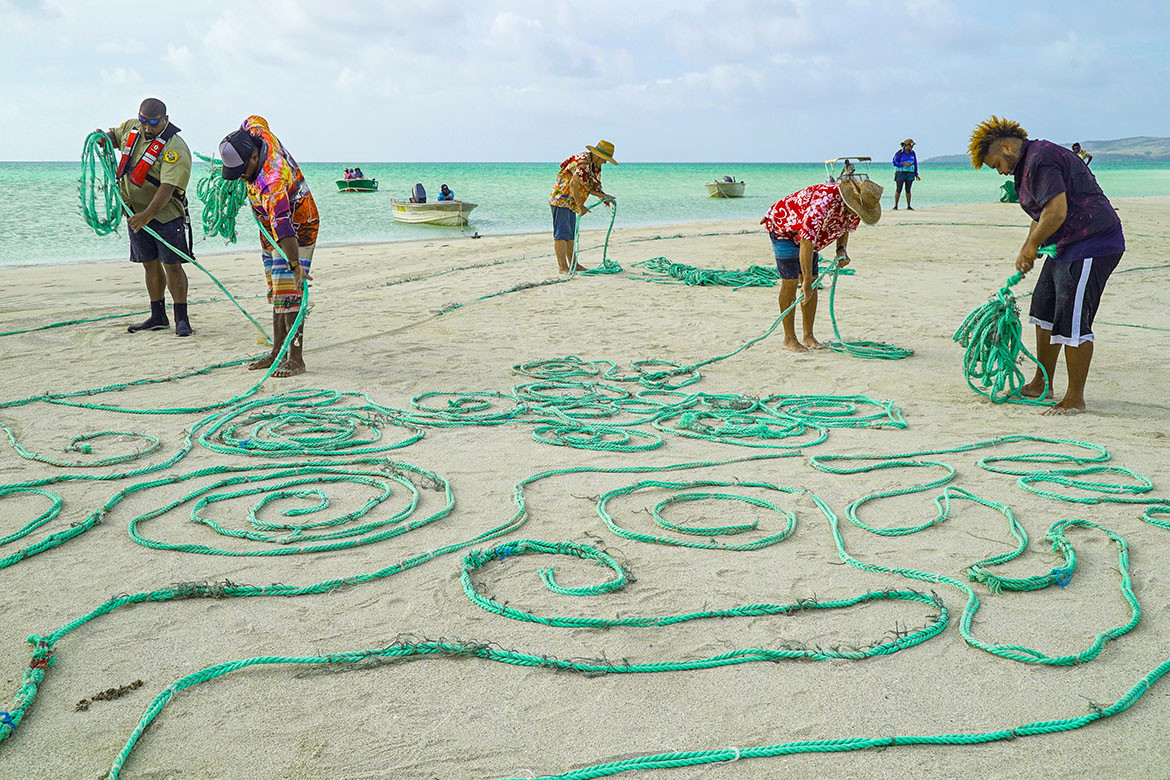Every year thousands of kilometres of fishing nets are dumped into the ocean. Cut from boats during storms, abandoned when beacons fail, washed overboard or simply dumped when tangled or caught on reefs. These nets continue to float through the ocean as invisible death traps for sharks, turtles, fish, coral and marine mammals. Last year an Australian Navy vessel collected an eight-tonne Indonesian gill net off the Darwin coast. This fine, grey-green net is invisible once submerged, and was literally tens of kilometres long.
Thankfully someone on board had the nounce to speak up and half* of the net was delivered to Erub Arts and then to the director of the Ghost Net Collective, Lynnette Griffiths, in Cairns.
When Griffiths started using the nets to make art with the Indigenous artists of Cairns, Townsville and Erub in the Torres Strait, she thought she was cleaning the ocean one net at a time: “But that’s bullshit, there is just too much, all we can do is hope to bring people’s attention to the damage these nets cause,” says Griffiths.
Over the past 20 years, the use of ghost nets in art has increasingly been practised across the Northern Australian coast including the Torres Strait and the Timor Sea. More broadly it is being practised globally with indigenous groups, in particular, using this strange material for fibre art to express concerns about conservation and environmental impacts of the fishing industry.
With an estimated 46 per cent of the ocean’s plastic pollution originating from fishing nets (and much more sub-marine unaccounted for) it is a concern that we should all be visiting.

In Australia, the Ghost Net Collective was formally founded in 2020, though the group has been working collaboratively with ghost nets since 2009. The aim of formalising the collective was to consolidate the group through Covid and give direction to the projects they were working on. Moreover, it was important that the group be recognised as cross-cultural. As such, while the imagery is linked to cultural mores of the Indigenous artists, it is also a deep concern for all of the artists working with this medium. As it should be.
In keeping with this philosophy, the current project, Mermer Waiskeder (Stories of the Moving Tide), speaks to the plight of marine animals through the instantly recognised form of the stingray. “There is always a conversation, everyone has a stingray story to tell,” says Griffiths.

The project has been curated by the incredibly talented Nina Miall (Curator International Art, GOMA) and commissioned by Lendlease for the public thoroughfare, Exchange Square, in Barangaroo South for permanent installation. Designed by the Ghost Net Collective, but in consultation with Indigenous artists of the Sydney region, the eagle ray (Myliobatidae) was selected for its vast habitat that includes the Queensland coast, Torres Strait and Sydney harbour.
The finished sculpture will comprise 11 eagle rays. At 2.8-metres in width, the rays will seemingly float below the Exchange Square ceiling. Arranged in an organic curving flow, the first two rays will be in Torres Strait Islander and Indigenous Australian colours. That said, these colours are naturally introduced within the established patterns and nuanced in effect. Spreading out from this introduction are the remaining nine rays. Each was designed by one of the artists and then collectively tweaked for cohesion, the flow shifts mid-point as the water line is expressed in the changing patterns of two of the massive rays.

Connecting Indigenous cultures through shared knowledge, through the art-marking the concern is further expanded to include more than a hundred people from communities along Australia’s coastline and regional hubs. Small stingrays will be stitched by these volunteers to be incorporated into the project. There is a general chatter as the artists work on each of the rays, stories are shared, day-to-day occurrences are recounted, but the sea is the touchstone that anchors these artists.
Directed by Griffiths, the core collective artists are: Emma Gela, Marion Gaemers, Florence Gutchen, Lavinia Ketchell, Nancy Naawi, Racy Oui-Pitt and Jimmy John Thaiday. And if the name Jimmy John Thaiday is familiar, he has just won the Telstra Multi Media Art prize. That said, the artists within the collective are just that, a collective, where thoughts and skills are shared without ego, with each artist, and Mermer Waiskeder will be installed in Barangaroo in late January 2023.
*The other half was sent to the artists of Pormpuraaw Art and Culture Centre, who are also working with ghost nets.






Ghost Net Collective
ghostnetcollective.com.au
Erub Arts
erubarts.com.au

